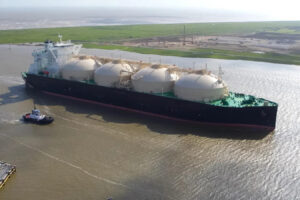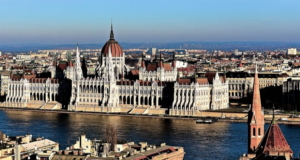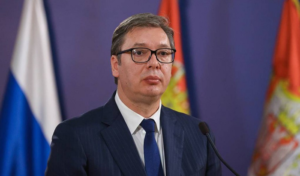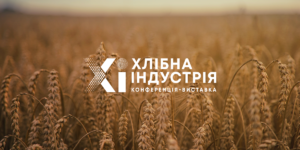
16 billion current passwords leaked online, including access to Apple, Google, and Facebook
According to Forbes, researchers from Cybernews have recorded a unique leak — more than 16 billion current login and password pairs on sites including Apple, Google, Facebook, and other services.
This is the largest leak in history: 30 different databases, each containing tens of millions to 3.5 billion records. About 184 million accounts from previous leaks were already known, while the rest is new, “fresh” and vulnerable information.
The data is suitable for instant phishing attacks and account hacks — the login-password structures are ready to use. These are not old leaks, but new, fresh lists that are actively being sold on dark forums.
What experts advise:
• Change passwords for all important online accounts (Google, Apple, social networks, email, etc.).
• Enable two-factor authentication (2FA) — via SMS, code generator app, or hardware keys.
• Switch to passkeys — password-less logins protected by biometrics or PINs, recommended by Google and Meta.
• Use a password manager to generate long, unique combinations and store them securely.
• Do not click on links from unverified SMS messages, emails, or messengers to avoid phishing.
Even old passwords (even “12345678”) are still relevant — they are often used in such leaks. After leaks, many people do not change them in time: according to research, only ~33% of users update their password after an incident — and only 13% do so within 3 months.

The global market for humanoid robots could grow to $1.4-1.7 trillion by 2050, according to UBS analysts. They estimate that in 10 years, the market will be replenished with 2 million such robots, and by 2050, their number could reach 300 million, which will help solve the problem of labor shortages.
The feasibility of using robots is due to an aging population, a shortage of labor resources, and low labor productivity growth in the service sector, according to a new UBS report.
At the same time, the bank’s analysts expect that the turning point, after which the rapid spread of anthropomorphic robots will begin, will not come before 2030.
“We see some obstacles that need to be overcome before production can gain momentum,” they write. “These are related to the development of AI, the formation of data arrays, and regulation.”
Over the next 20 years, the price of humanoid robots and the cost of their operation could fall by more than 70%, driven by increased production volumes and improved supply chains, according to UBS.
The development of the sector will bring significant benefits to automation companies, manufacturers of automotive components, semiconductors, and batteries, as well as suppliers of rare earth metals.
UBS estimates that the production of 86 million humanoid robots in 2050 will generate additional revenues of $400 billion for the automation market and $7 billion for the rare earth metals market, which is four times and twice the 2025 figures, respectively.
For more information on the prospects for rare earth element mining in Ukraine (without which robots cannot be created), see the video from the Experts Club analytical center – The global market for humanoid robots could reach $1.7 trillion by 2050.

According to the latest data from Eurostat, EU countries’ purchases of Russian gas increased significantly between January and April 2025. Despite efforts to abandon supplies from Russia, significant volumes of both pipeline and liquefied natural gas (LNG) continued to flow into the European Union.
Imports of Russian pipeline gas to Europe in the first four months of 2025 increased by approximately 5–10% compared to the same period last year.
Russian LNG supplies also showed growth — at the end of January, this figure exceeded 17% compared to December 2024.
In January 2025, the EU spent about €1.9 billion on Russian gas: ≈€833 million on pipeline supplies and ≈€1.07 billion on LNG, which was the highest level in two years.
The suspension of Russian gas transit through Ukraine on January 1, 2025, prompted EU countries to increase purchases through alternative routes, such as TurkStream, and through LNG supplies.
Advantageous contracts and cheaper prices for Russian LNG are being used, especially in the context of energy shortages.
Energy dependence: Despite the goal of completely abandoning Russian gas by 2027, the EU bloc remains dependent on it for ≈19% of its total gas imports.
Diversification in progress: The EU is actively trying to offset the risks by finding new suppliers (the US, Norway, Algeria, Azerbaijan) and increasing the role of LNG, but ending Russian supplies will take time.
European authorities are discussing the possibility of transferring contracts to Force Majeure status, which would facilitate their termination by 2027.

Hungary is tightening rules on foreign property purchases. Restrictions on home purchases by non-residents will come into effect on July 1.
Foreign citizens who are not members of the Schengen/EEA will have to obtain permission from a government commission to purchase real estate, including houses and apartments. Significant restrictions on land and residential property transactions are expected.
The aim of the changes is to protect the domestic housing market from excessive foreign demand, especially in tourist and suburban regions, to reduce price inflation, and to prevent social tension due to rising rents.
The new changes are in line with environmental and social criteria; land transactions have long been restricted, and now similar measures are being extended to residential real estate.
According to data from the Hungarian Central Statistical Office (KSH):
2023 — foreigners purchased more than 6,300 residential units, which is 1,700 fewer than in 2022, accounting for almost 6% of all transactions and 7.6% of the portfolio price.
2022 — peak — about 8,000 purchases by foreigners.
National and category composition of buyers:
Germany — in first place, with more than 1,470 transactions in 2023, accounting for about 25% of all purchases by foreigners.
Slovakia, Romania, and the United Kingdom — 600–700 purchases each.
China — nearly 600 purchases, mainly in Budapest.
Ukraine — 131 property purchases.
As of early 2025, there are approximately 255,450 foreign citizens living in Hungary.
The limits introduced are aimed at reducing pressure on prices, especially in areas popular with foreigners — Budapest, Lake Balaton, and the border area.
The government seeks to prevent the rise in housing prices due to investments by non-residents, as well as to alleviate the shortage of affordable housing for Hungarians.
The new rules require approval and may slow down the purchase process by 2–3 months.
Prices in vulnerable regions are expected to stabilize and growth rates to slow down. Hungary will significantly tighten requirements for foreigners purchasing real estate.

Serbian President Aleksandar Vučić intends to pay an official visit to Ukraine in the near future, according to Serbian and Ukrainian sources. The main purpose of the trip will be to participate in high-level events in Kyiv and hold talks with Ukrainian President Volodymyr Zelenskyy.
Key expectations from the visit:
Bilateral meeting with Zelensky The agenda will focus on discussing the current geopolitical situation, prospects for European integration, humanitarian cooperation, and regional stability issues. The visit is seen as a step toward deepening political dialogue between the countries.
Participation in an international conference
Vucic is expected to participate in a conference on the reconstruction of Ukraine, where Serbia may present initiatives in the areas of humanitarian aid, infrastructure cooperation, and education.
Context and significance of the visit:
• Policy of neutrality Although Serbia has not joined the sanctions against Russia, the country continues to support the territorial integrity of Ukraine and participate in providing humanitarian aid. This visit could strengthen Belgrade’s international position as a constructive mediator in European politics.
• Deepening the European course According to analysts, the upcoming visit is also linked to Serbia’s course towards rapprochement with the EU. It can be seen as a diplomatic signal of Belgrade’s commitment to European values, especially ahead of important decisions on the future expansion of the union.
Possible consequences:
Serbia – Ukraine
The visit could give new impetus to relations, especially in the humanitarian sphere and education.
Serbia – EU
This will be a symbolic confirmation of the European vector, strengthening trust on the part of Brussels.
Serbia’s domestic policy
Vučić is demonstrating a balance between Eastern and Western partners, which could strengthen his position within the country.
Belgrade. June 10. SERBIAN ECONOMIST


In just one week, 25 leading experts and more than 200 industry representatives will discuss current issues in the production, marketing, and distribution of flour, cereals, bakery products, and pasta, as well as share their experiences in implementing technological innovations, adapting to the market, and building effective relationships with retailers and HoReCa.
We are already counting down the days until the start of Bread Industry 2025!
On June 12–13, Uman will become a meeting point for ideas, experience, and new opportunities for everyone who works with bread, flour, technologies, and sales markets.
The forum brings together over 200 participants — managers and owners of bread factories, confectionery enterprises, and bakeries; manufacturers of flour, flour products, cereals, pasta, and other grain processing enterprises; representatives of retail, suppliers of packaging, raw materials, ingredients, equipment, and technologies; government officials, and other participants from the agro-industrial and related sectors.
The program offers a concentration of practical knowledge and breakthrough solutions. On stage are top experts from the baking, flour milling, machine building, HoReCa, and retail industries. Instead of general phrases, there will be clear insights, case studies, and tools that are already working in Ukraine and beyond.
And also:
– a specialized exhibition featuring equipment, ingredients, and innovations;
– master classes on baking bread, from the first kneading to the fragrant crust;
– live communication, networking, and real contacts for business development;
– and even an excursion to Sofiyivka and the Rebbe Nachman Synagogue after the official part is over.
Registration is ongoing, but time is running out. Don’t put off your decision — discover new opportunities with Bread Industry 2025.
Organizers: All-Ukrainian Bakers Association, Union of Flour Millers of Ukraine, AgroMarketing Agency
General partner — Lesaffre Ukraine
Quality control partner — SocTrade
Special partner — Uni Blend
Banquet partner — Bistro Pekarya Uman
Official information partner — Interfax-Ukraine
Official information and analytical partner of the forum — Experts Club
Venue: Uman National University of Horticulture (1 Institutskaya St., Uman, Cherkasy region)
REGISTRATION FEE INCLUDES:
Participation in the conference for one delegate
Conference materials
Coffee breaks, lunches, and all events included in the conference program
Field trips and excursions as part of the conference
Attendance at the banquet and networking
ADDITIONAL OPPORTUNITIES
Participation as a sponsor or partner of the conference
Placement of a banner in the conference hall, in the lobby in front of the conference hall
Placement of an exhibition space in the lobby in front of the conference hall
Inclusion of advertising and souvenir products of the company in the participant’s package
For questions regarding participation, advertising, and presentations, please contact the event coordinators:
Agro Marketing Agency
Svyatoslav Tkachenko
+38(063)357 73 59